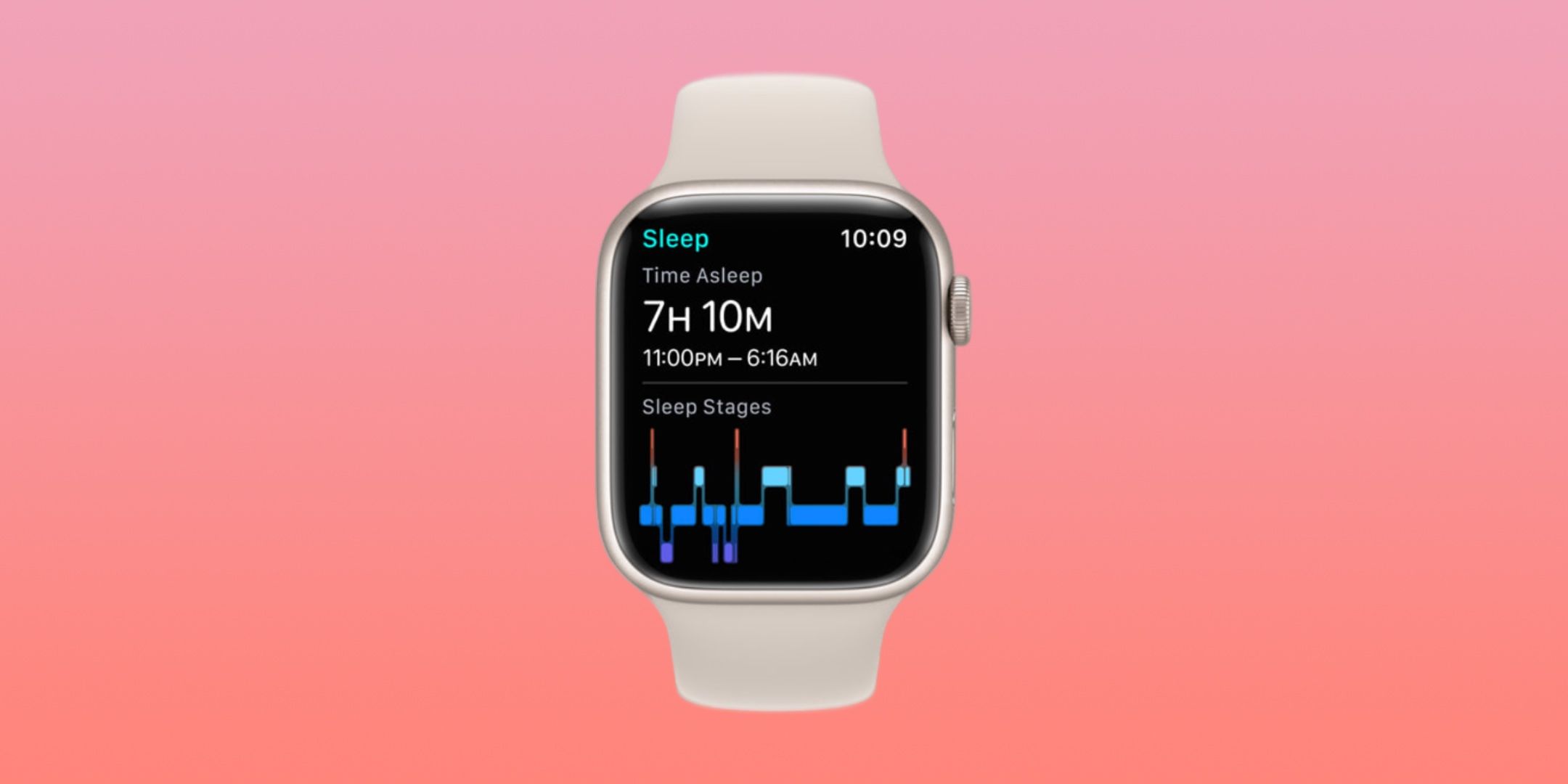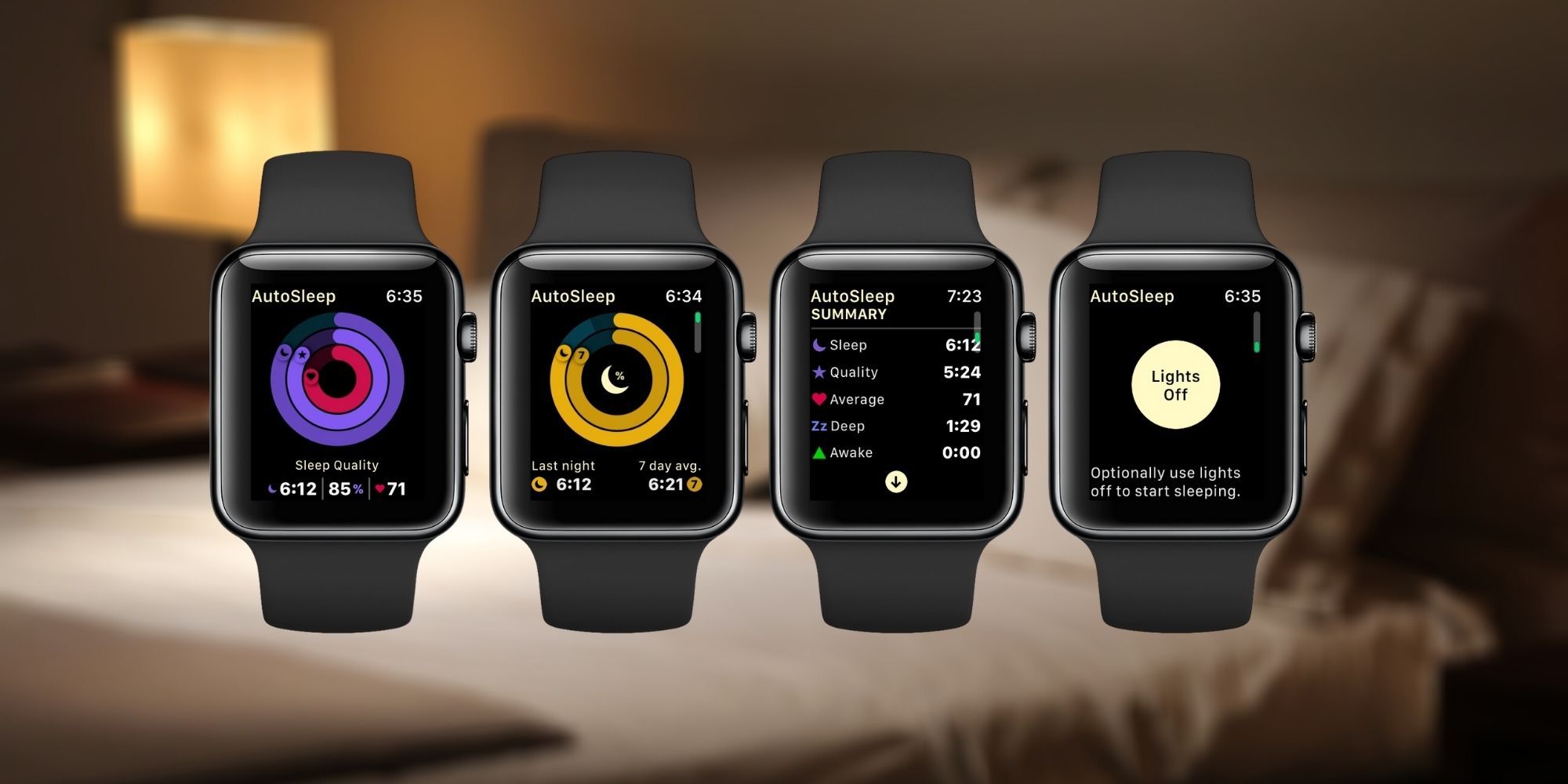
The Apple Watch's sleep tracking features are set to get a boost with the upcoming release of watchOS 9, but the additions might just eliminate the need for third-party sleep tracking apps that once dominated the market. watchOS 9 is the latest version of the software for the Apple Watch that will be released to the public in the fall with a slew of new features. Though it won't be universally adopted until year-end, Apple previewed watchOS 9 in June at the Worldwide Developers Conference, an event centered around developers and software. Unfortunately, these third-party developers might see their market displaced by native sleep tracking features. As Apple adds built-in features to watchOS, there is less of a need for third-party apps.
Sleep tracking was first included in watchOS 7 two years ago but has been relatively limited compared to third-party offerings. Previous versions of watchOS allowed users to set their preferred bedtimes and wake times, offering suggestions for how to wind down before sleep. However, the way it tracked sleep was pretty rudimentary. The Sleep app could detect when an Apple Watch wearer fell asleep and when they woke up, displaying the data in a graph. It could also determine the quality of sleep based on movements recorded by the watch's sensors. Beyond this functionality, no advanced metrics were provided through the Sleep app in watchOS 7 and 8. These metrics were available through third-party apps, but now they are included natively in watchOS 9.
Besides the time and quality of sleep, another important factor in sleep health is the time spent in the various sleep stages. Third-party apps have used data from the Apple Watch's sensors to determine how long the wearer has spent in each sleep stage, but this feature is built into the Sleep app in watchOS 9. The Apple Watch uses the device's heart rate sensor and accelerometer to determine whether the wearer is in REM, Core, or Deep sleep. Additionally, this data is shown on new charts in the Health app on the iPhone, alongside metrics like heart and respiratory rates while sleeping. Since the native Sleep app is considerably more robust in watchOS 9, third-party sleep tracking apps are becoming redundant.

Third-party sleep tracking apps, like AutoSleep and Pillow, were immeasurably better than prior implementations of native sleep tracking. Before watchOS 7 added the first-party Sleep app, these third-party options were the only way to track an Apple Watch wearer's sleep. Even after Apple introduced the Sleep app, third-party apps provided advanced metrics like sleeping heart rate, sleep quality and sleep stages. Of course, all of these features are set to be added to watchOS 9 and iOS 16 in the fall, likely eliminating the need for third-party apps that have spent years developing for watchOS.
With that said, there is still reason to keep using a third-party sleep app instead of switching to watchOS 9's built-in sleep tracking. There is already tight integration between third-party fitness and sleep apps with the native Health and Fitness apps, so sleep users can import data directly to watchOS and iOS. There are some things that third-party sleep apps just do better than the built-in Sleep app, to put it simply. AutoSleep, for example, displays sleep data in rings resembling Apple's Activity Rings — and is an accessible format to view and understand the sleep quality. Despite the advantages of third-party apps, new users are likely to use the built-in sleep tracking functionality in watchOS 9, which doesn't bode well for established sleep tracking apps.
Sleep tracking on the Apple Watch got a whole lot better with watchOS 9, and it might make third-party sleep tracking apps unnecessary.Brady Snyder
